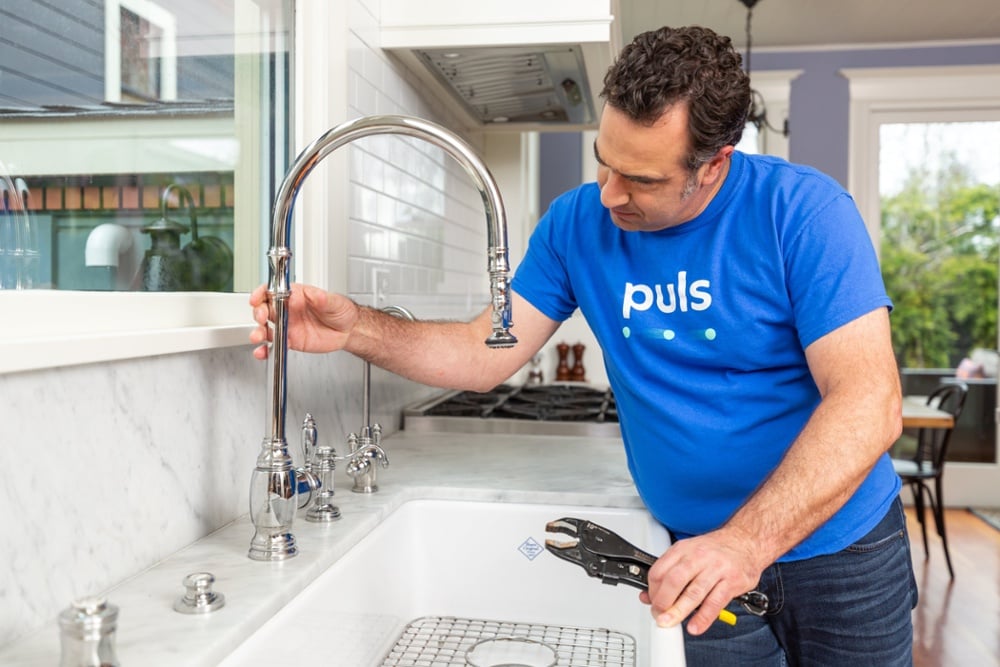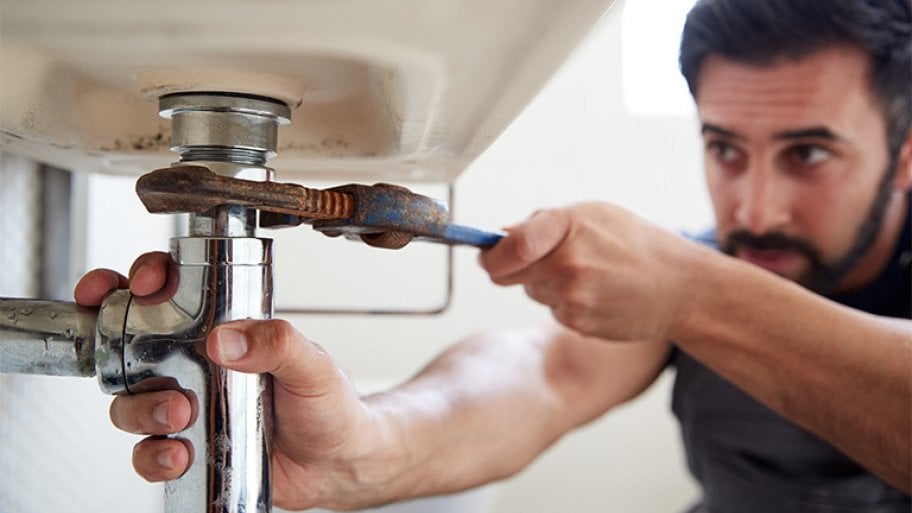Appliance Issues: When To Look For a Plumbing Professional's Help for Common Issues
Appliance Issues: When To Look For a Plumbing Professional's Help for Common Issues
Blog Article
They are making several good annotation on the subject of Why Your Water Pipes Are Noisy and How To Shut Them Up in general in the article underneath.

To diagnose loud plumbing, it is very important to identify first whether the undesirable noises occur on the system's inlet side-in various other words, when water is turned on-or on the drainpipe side. Sounds on the inlet side have differed causes: excessive water stress, worn shutoff as well as faucet components, improperly attached pumps or other devices, incorrectly put pipeline fasteners, and also plumbing runs including way too many tight bends or various other constraints. Noises on the drainpipe side generally come from poor area or, as with some inlet side sound, a layout consisting of tight bends.
Hissing
Hissing sound that occurs when a tap is opened slightly normally signals excessive water stress. Consult your local public utility if you suspect this trouble; it will have the ability to tell you the water pressure in your location as well as can mount a pressurereducing valve on the incoming water pipe if essential.
Thudding
Thudding noise, typically accompanied by shivering pipes, when a tap or appliance shutoff is switched off is a condition called water hammer. The noise and also vibration are triggered by the resounding wave of pressure in the water, which unexpectedly has no place to go. Often opening up a shutoff that discharges water rapidly right into a section of piping including a constraint, elbow, or tee fitting can create the very same condition.
Water hammer can typically be treated by mounting fittings called air chambers or shock absorbers in the plumbing to which the issue shutoffs or taps are connected. These devices enable the shock wave developed by the halted flow of water to dissipate in the air they consist of, which (unlike water) is compressible.
Older plumbing systems might have brief vertical sections of capped pipeline behind wall surfaces on tap runs for the exact same function; these can at some point loaded with water, lowering or destroying their effectiveness. The remedy is to drain pipes the water supply entirely by shutting down the major water supply valve and opening all taps. After that open up the major supply valve and close the taps one at a time, starting with the faucet nearest the valve as well as ending with the one farthest away.
Babbling or Shrieking
Extreme chattering or shrilling that takes place when a shutoff or tap is turned on, and that usually disappears when the fitting is opened completely, signals loose or faulty interior components. The option is to change the shutoff or tap with a new one.
Pumps and appliances such as cleaning makers and dishwashers can move electric motor sound to pipes if they are improperly linked. Link such items to plumbing with plastic or rubber hoses-never rigid pipe-to isolate them.
Various Other Inlet Side Noises
Squeaking, squeaking, scratching, breaking, and also touching typically are caused by the development or tightening of pipelines, typically copper ones supplying warm water. The noises happen as the pipes slide versus loosened fasteners or strike nearby residence framing. You can frequently determine the place of the problem if the pipelines are exposed; simply follow the audio when the pipes are making sounds. Probably you will certainly find a loosened pipe wall mount or an area where pipelines lie so near floor joists or various other mounting pieces that they clatter versus them. Connecting foam pipeline insulation around the pipes at the point of call ought to treat the issue. Make certain straps and also hangers are safe and secure and give sufficient assistance. Where possible, pipeline bolts ought to be affixed to huge architectural elements such as foundation wall surfaces instead of to mounting; doing so decreases the transmission of vibrations from plumbing to surface areas that can amplify as well as move them. If attaching bolts to framework is unavoidable, cover pipelines with insulation or other durable product where they get in touch with fasteners, and also sandwich the ends of new bolts in between rubber washers when mounting them.
Dealing with plumbing runs that suffer from flow-restricting tight or countless bends is a last resort that ought to be embarked on only after getting in touch with an experienced plumbing professional. Regrettably, this circumstance is rather common in older houses that might not have actually been constructed with indoor plumbing or that have seen a number of remodels, particularly by beginners.
Drain Noise
On the drain side of plumbing, the chief objectives are to remove surface areas that can be struck by dropping or rushing water and to protect pipelines to consist of inescapable audios.
In new construction, tubs, shower stalls, bathrooms, as well as wallmounted sinks and also containers need to be set on or versus resilient underlayments to reduce the transmission of sound through them. Water-saving bathrooms as well as faucets are much less loud than traditional versions; mount them as opposed to older kinds even if codes in your location still allow utilizing older fixtures.
Drainpipes that do not run vertically to the basement or that branch right into straight pipeline runs supported at floor joists or other mounting existing specifically troublesome noise problems. Such pipes are large sufficient to emit substantial resonance; they additionally lug substantial quantities of water, that makes the circumstance worse. In new construction, specify cast-iron soil pipelines (the huge pipelines that drain pipes bathrooms) if you can afford them. Their massiveness contains a lot of the sound made by water going through them. Also, stay clear of directing drainpipes in wall surfaces shown bedrooms and also spaces where people gather. Walls containing drains must be soundproofed as was explained earlier, using dual panels of sound-insulating fiber board as well as wallboard. Pipes themselves can be wrapped with unique fiberglass insulation produced the purpose; such pipelines have a resistant vinyl skin (sometimes having lead). Outcomes are not always acceptable.
DIAGNOSE UNWANTED PLUMBING NOISES
Did You Hear That?
One of the first steps to take when diagnosing noisy plumbing is to determine whether the mysterious sound is occurring when your water is turned on or if it is a result of draining water. Noises on the inlet side (or when your water is turned on) could be caused by: excessive water pressure, worn valve or faucet parts, improperly connected pumps or other appliances, incorrectly placed pipe fasteners, and plumbing runs containing too many tight bends or other restrictions. Noises on the drain side usually stem from poor location or a possible pipe layout containing too many tight bends.
Hissing
A hissing noise that occurs when a faucet is opened slightly generally signals excessive water pressure. If you encounter hissing sounds call your locate water company, they will be able to tell you if the water pressure in your area may be the culprit. They can also install a pressure reducing valve on the incoming water supple pipe to help regulate the pressure.
Thudding
Thudding noise, often accompanied by shuddering pipes, when a faucet or appliance valve is turned off is a common condition referred to as a water hammer. The noise and vibration are caused by the reverberating wave of pressure in the water, which suddenly has no place to go. Opening a valve that discharges water at a rapid pace into a section of piping containing a restriction, elbow, or other fitting can also produce water hammer.
Water hammer can usually be cured by installing fittings called air chambers or shock absorbers in the plumbing to which the problem valves or faucets are connected. These devices allow the shock wave created by the halted flow of water to dissipate in the air they contain, which (unlike water) is compressible.
Older plumbing systems may have short vertical sections of capped pipe behind walls on faucet runs for the same purpose; these can eventually fill with water, reducing or destroying their effectiveness. The cure is to drain the water system completely by shutting off the main water supply valve and opening all faucets. Then open the main supply valve and close the faucets one at a time, starting with the faucet nearest the valve and ending with the one farthest away.
Chattering or Screeching
Intense chattering or screeching that occurs when a valve or faucet is turned on, and that usually disappears when the fitting is opened fully, signals loose or defective internal parts. In most cases, the only solution is to replace the defective valve or faucet with a new one.
Pumps and appliances such as washing machines and dishwashers can also transfer motor noise to pipes if they are improperly connected. When installing new appliances always link them to plumbing with plastic or rubber hoses and never use rigid pipe. This will dramatically cut down on the amount of noise create when the appliance is in use.
Other Mysterious Noises
Creaking, squeaking, scratching, snapping, and tapping noises are commonly caused by the expansion or contraction of copper pipes used to supply hot water. The sounds can occur as the pipes slide against loose fasteners or strike nearby house framing.
If you can pinpoint the problem by following the sound to an exposed pipe you may discover a lose pipe hanger or other obstruction that the pipes can clatter against. Attaching foam pipe insulation around the pipes at the contact points will lessen the transmission of vibration from plumbing to surfaces that can amplify the sounds.
When replacing or installing new pipe hangers try to fasten them to larger structural elements that will work to dampen or disperse the sound and always sandwich the ends of new fasteners between rubber washers.
Drain Pipe Noise
When dealing with noises produced by drain pipes the primary goal is to eliminate and surfaces that can be struck by falling water or rushing water and to insulate the pipes to contain any avoidable sounds.
When replacing toilets or faucets, inquire about water-saving alternatives as they are less noisy than conventional models. Upgrading your fixtures can be an easy solution to stubborn plumbing sounds.
When having old plumbing repaired or replaced avoid routing drain pipes in walls shared with bedrooms or rooms where your family and guests often gather. Walls containing drain pipes need to be soundproofed and the pipes themselves should be wrapped with specially designed fiberglass insulation.
https://www.horizonservices.com/about-us/blog/diagnose-unwanted-plumbing-noises/

Hopefully you enjoyed reading our piece on Diagnose Unwanted Plumbing Noises. Thanks for spending some time to read through our article post. Are you aware of anybody else who is enthusiastic about the topic? Be sure promote it. Thanks for your time spent reading it.
Schedule Free Estimate Report this page